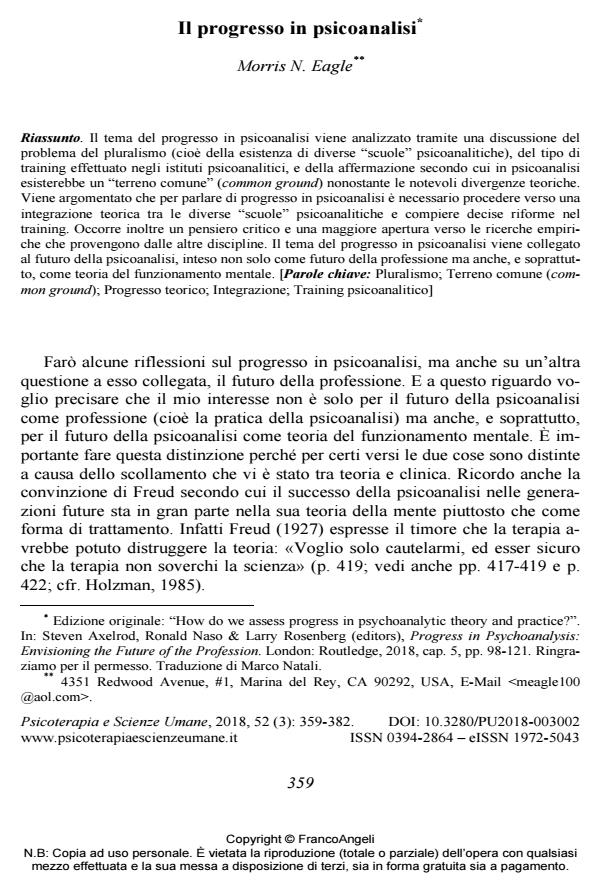Progress in psychoanalysis
Journal title PSICOTERAPIA E SCIENZE UMANE
Author/s Morris N. Eagle
Publishing Year 2018 Issue 2018/3
Language Italian Pages 24 P. 359-382 File size 227 KB
DOI 10.3280/PU2018-003002
DOI is like a bar code for intellectual property: to have more infomation
click here
Below, you can see the article first page
If you want to buy this article in PDF format, you can do it, following the instructions to buy download credits

FrancoAngeli is member of Publishers International Linking Association, Inc (PILA), a not-for-profit association which run the CrossRef service enabling links to and from online scholarly content.
The question of progress in psychoanalytic theorizing is analyzed through a discussion of pluralism (i.e., the existence of different psychoanalytic "schools"), of the nature of training and education in psychoanalytic institutes, and of the claim of a "common ground" in certain areas despite theoretical differences. It is argued that progress requires theoretical integration among different psychoanalytic "schools" and shifts in prevailing attitudes in regard to training and education. The need for critical thinking and openness to relevant empirical findings from other disciplines is also emphasized. The question of progress in psychoanalysis is linked to the future of psychoanalysis conceived not only as the future of the profession but also, and more importantly, of a theory of mental functioning.
Keywords: Pluralism; Common ground; Theoretical progress; Integration; Psychoanalytic education
Morris N. Eagle, Il progresso in psicoanalisi in "PSICOTERAPIA E SCIENZE UMANE" 3/2018, pp 359-382, DOI: 10.3280/PU2018-003002